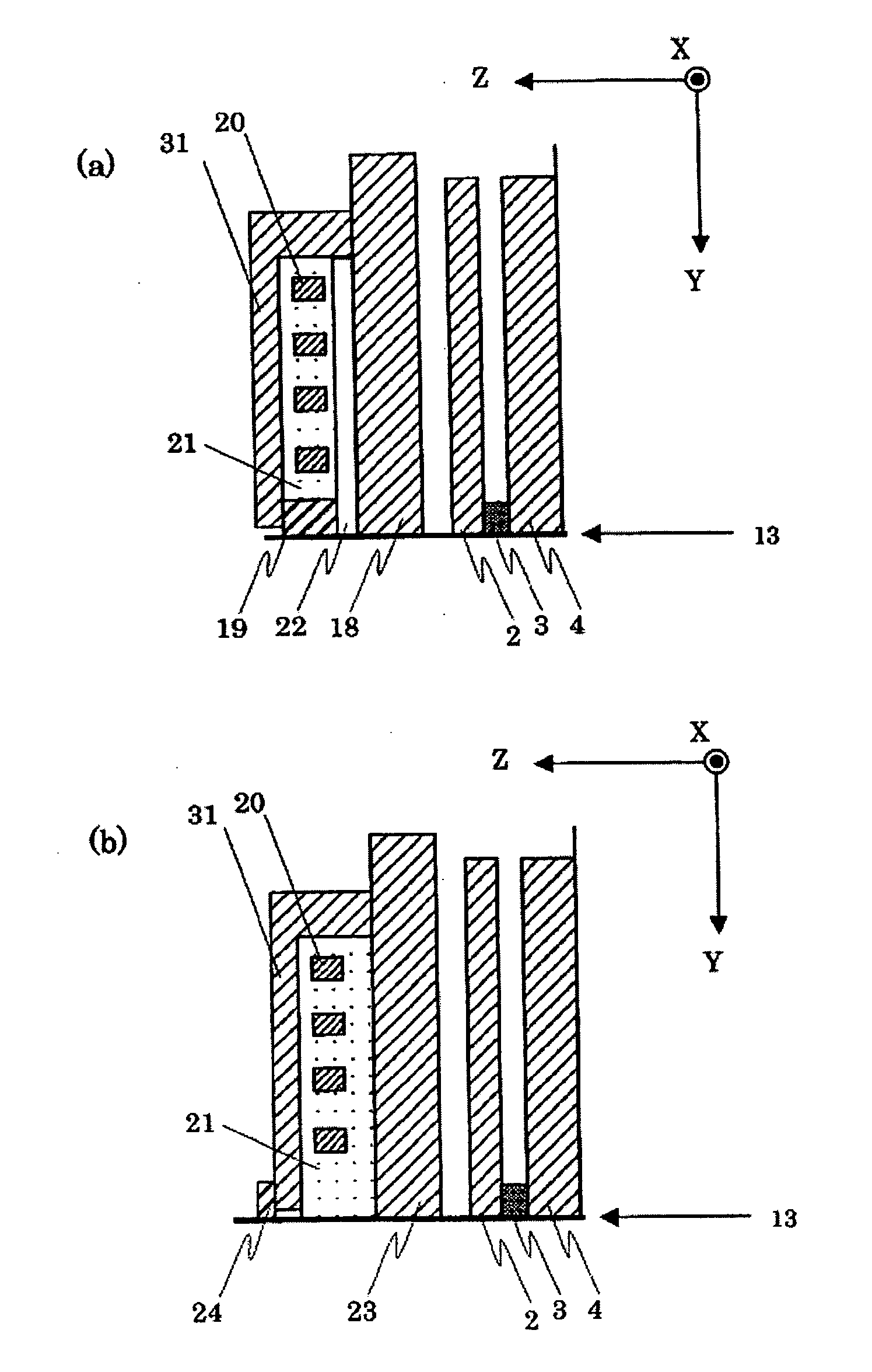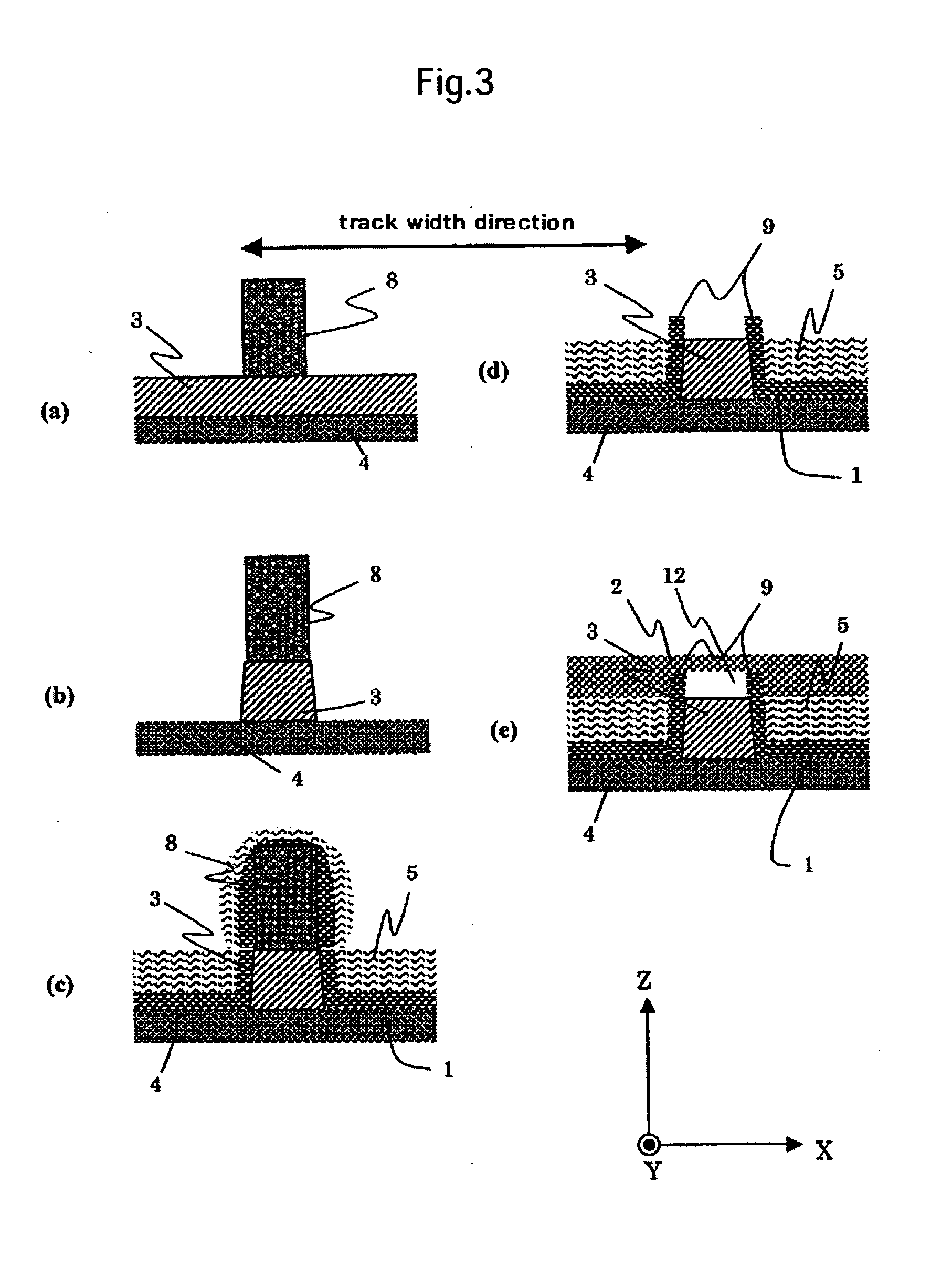Magneto-resistive sensor with stopper layer and fabrication process
a technology of resistive sensor and stopper layer, which is applied in the field of magnetoresistive sensor, can solve the problems of difficult and achieve the effects of reducing the height of the resist mask, eliminating the fence, and reducing the difficulty of lifting off using cmp
- Summary
- Abstract
- Description
- Claims
- Application Information
AI Technical Summary
Benefits of technology
Problems solved by technology
Method used
Image
Examples
embodiment 1
[0052] A method for fabricating a magneto-resistive sensor will be described as an example of the present invention usingFIGS. 7, 8, and 9. FIG. 7 is cross-sectional drawings in the sensor height direction at a position where a magnetoresistive film 3 is placed that shows the formation process in the sensor height direction. FIGS. 8 and 9 are cross-sectional drawings in the track width direction at a position where a magnetoresistive film 3 is placed that show the formation processes of the track. These embodiments are separated into the case when the first stopper layer for track 51 is removed (embodiment 1-1) and the case when it is not removed (embodiment 1-2) as will be explained later. FIG. 8 shows the process for forming the track described in the embodiment 1-1, and FIG. 9 shows the process for forming the track described in embodiment 1-2.
[0053] At first, an insulator such as Al2O3 etc. is deposited on the surface of a substrate composed of alumina titanium carbide, etc. an...
embodiment 2
[0076] The embodiment 1 described the case when the first stopper layer for sensor height 41 was not used during formation in the sensor height direction or when it was formed using DLC. However, in the case when it is necessary to make the length of the resist mask 11 smaller in the sensor height direction, a fabricating method described as follows becomes necessary. A method for fabricating a magneto-resistive sensor of this embodiment will be described with reference to the following drawings herein.
[0077] This embodiment can be divided into a total of four cases; the case when the first stopper layer for sensor height 41 is removed in the formation process of the sensor height, and the case when not removed; the case when the first stopper layer for track 51 is removed in the formation process of the track, and the case when not removed. Hereafter, the explanation will be carried out as follows; the case when both the first stopper layer for sensor height 41 and the first stopp...
embodiment 3
[0105] This embodiment is one in which the sensor height is formed after the formation of the track of the magnetoresistive film as shown in FIG. 6, and it is separated into the case when the first stopper layer for track 51 is removed (embodiment 3-1) and when it is not removed (embodiment 3-2) which will be described later during the track formation process. FIG. 20 shows the track formation process described in the embodiment 3-1, and FIG. 21 the track formation process described in the embodiment 3-2. FIG. 22 shows the sensor height formation process described in the embodiment 3-1, and FIG. 23 the sensor height formation process described in the embodiment 3-2.
[0106] The process for fabricating a magneto-resistive sensor of this embodiment will be described as follows. At first, an insulator such as Al2O3, etc. is deposited on the surface of a substrate composed of alumina titanium carbide, etc. and the lower shield layer 4 is formed after applying precision polishing using CM...
PUM
 Login to View More
Login to View More Abstract
Description
Claims
Application Information
 Login to View More
Login to View More - R&D
- Intellectual Property
- Life Sciences
- Materials
- Tech Scout
- Unparalleled Data Quality
- Higher Quality Content
- 60% Fewer Hallucinations
Browse by: Latest US Patents, China's latest patents, Technical Efficacy Thesaurus, Application Domain, Technology Topic, Popular Technical Reports.
© 2025 PatSnap. All rights reserved.Legal|Privacy policy|Modern Slavery Act Transparency Statement|Sitemap|About US| Contact US: help@patsnap.com



